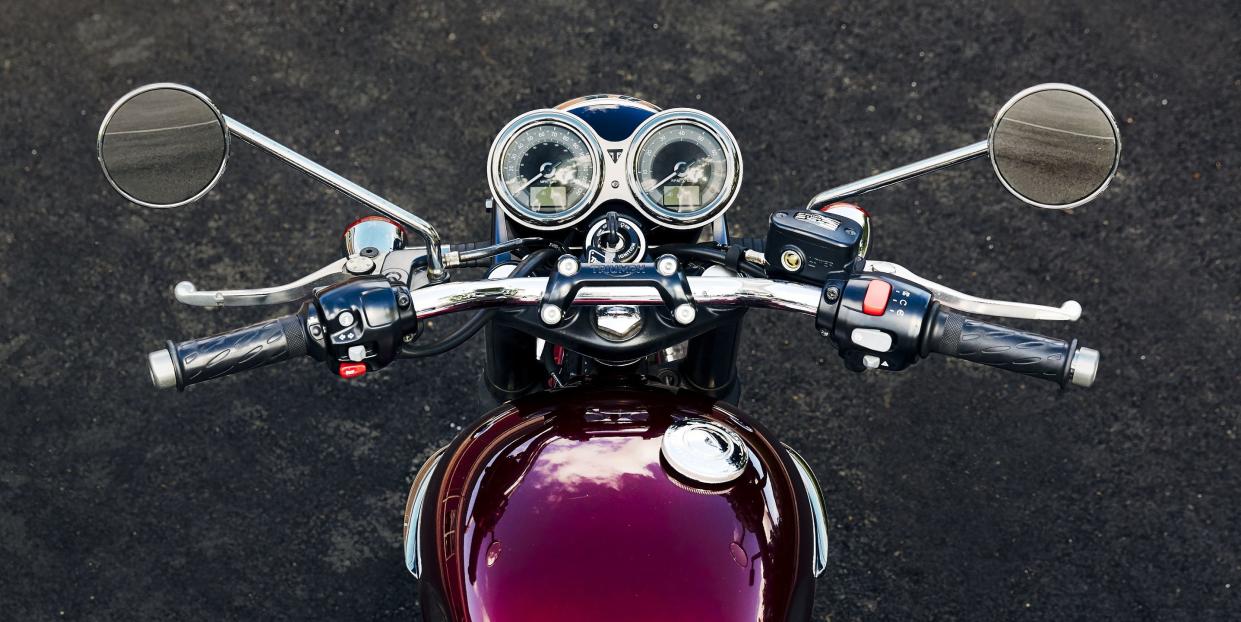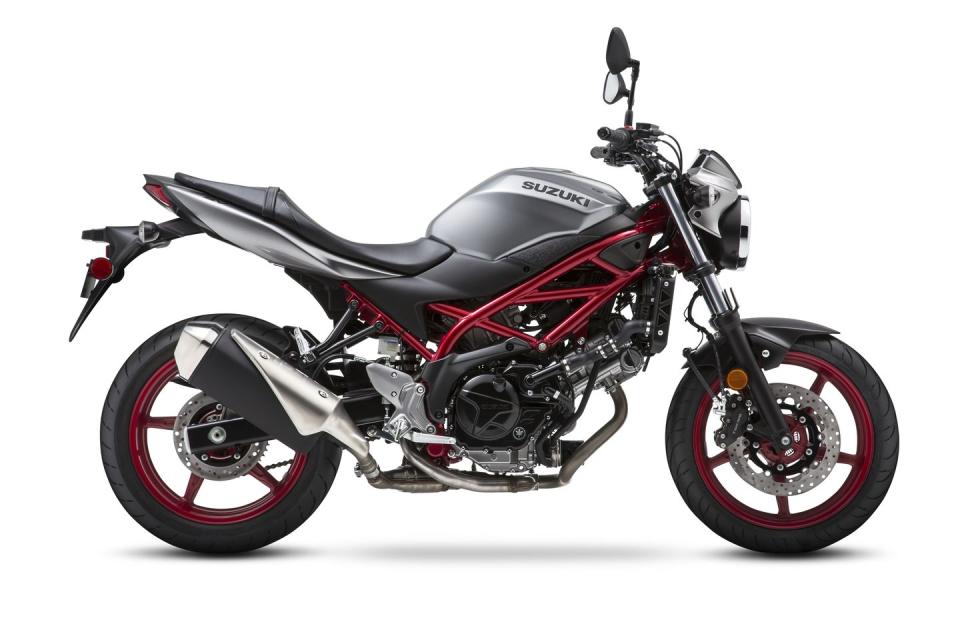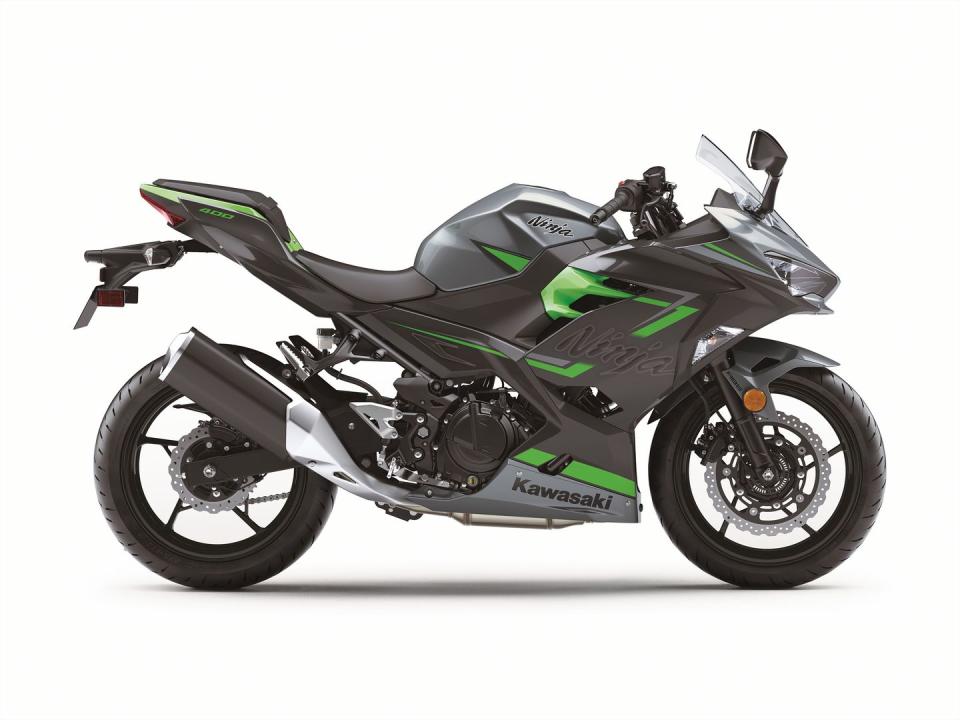How to Get Started in Motorcycles

My motorcycle is loud, dangerous, occasionally expensive, a source of anguish for my mom. But I can't go back. In an era of car technology that makes it safer to text while driving, a bike demands all your attention. Same as jujitsu or Spartan Races or cooking, that focus can feel euphoric. It makes your commute an antidote to cubicle fatigue and a feeling of acceleration accessible only to you and fighter pilots. Besides, learning to ride gives you a skill that will make you feel more capable in daily life. Because if movies have taught me anything, when the zombies come, at some point you'll need to make your getaway on a motorcycle.
Getting the Motorcycle
Anti-lock brakes and an engine between 300 and 800 cc (cubic centimeters, the measure of the engine size) is what first-time riders should look for. Buying used will save money, but right now is a fantastic time to buy new. The industry is working hard to court first-time riders with cool bikes and discounts. Here are our three favorites:
Suzuki SV650

The Mazda Miata in motorcycle form, fun and light with plenty of power.
Kawasaki Ninja 400

An engine size that makes it light and reasonably priced, with a parallel-twin engine that's smoother than single-cylinder competitors.
Ducati Scrambler Sixty2

Italian-grade design, customizable, and packed with high-end details like Brembo brakes.
Getting the Gear
Plan to spend at least $1000. If that sounds like a lot, pull from whatever you were going to spend on a bike. This is worth it. Comfortable protection will save you from injury and make you ride more, and more confidently.
Getting the License
For anyone learning to ride for the first time, we recommend taking a RiderCourse with the Motorcycle Safety Foundation (MSF). It's well worth the $150 or so that the organization charges.
Depending on where you take it, the course will likely involve one night in a classroom—hand signals, typical causes of collisions, stuff you'll need to pass the DMV's written test. The following weekend, you'll show up at a parking lot and get on motorcycles. You'll open the throttle while releasing the clutch. You'll turn and shift gears. Using a motorcycle that's not yours is reason enough to pay for the class. Because you will probably drop the bike.
At the end of the second day of riding, instructors will watch you go through maneuvers, like riding over fallen two-by-fours and slaloming between cones. The test that kept the most people in my class from passing: turning the bike around within a space the width of a parking spot, without touching your feet to the ground. Hint: Point your head and look where you want to go, not down at the front wheel.
If you pass, you don't have to take a riding test at the DMV, just the written test. Study practice questions. Pass, and you'll get that glorious M1 stamp on your license.
And Now, Some Frequently Asked Questions

So, how do I start a motorcycle exactly?
Turn the ignition (usually near the gauges) to the On position.
Pull in the clutch lever (left grip).
Turn the start/stop button to On, and push the starter, usually a button near your right thumb with a lightning-bolt logo. Some bikes have a safety cutoff, so make sure the kickstand is retracted.
Keeping the clutch engaged, kick the left foot lever down as far as it will go, into first gear.
Slowly let out the clutch while twisting the throttle (right grip) back toward you. You're now moving.
When the bike starts revving hard, to shift up, let go (close) the throttle, pull in the clutch lever, and use your left foot to kick up a gear.
To stop, squeeze the clutch and the front brake lever (right grip).
I've heard about "countersteering." What is that?
This refers to how, to initiate a right turn at speed, you start by pushing the right handlebar grip away from you. This causes the bike to lean to the right, and the front wheel angles into the turn all by itself. It's a term that will come up when you're learning, and makes more sense in practice than explanation. If you've ever ridden a bicycle fast, you've countersteered into a turn.
Do I need a helmet, even if my state doesn't require one?
If you've made up your mind about riding without a helmet, we're probably not going to convince you otherwise. But if you're undecided, there's plenty of statistical research to encourage use: The CDC calculates that helmets reduce the risk of death by about 37 percent and reduce the risk of head injury by 69 percent.
Why is the exhaust so loud?
The riders who set off car alarms might justify this with "Loud pipes save lives!" referring to how the noise forces other motorists to be aware of them. There's no hard research to say if it works. An even less scientific reason: Motorcycles have always meant a bit of contrarianism, and delight in upsetting non-bikers. Loud exhaust achieves that.
What's with those new three-wheelers?
A motorcycle-like experience (open air, speed) with added convenience (you don't have to hold the bike up at stoplights). It's appealing to an aging fan base of riders.
Will I crash?
You might hear the phrase "It's not if, it's when," which is useful if it compels you to put on all your safety gear. Statistically, your chances of injury or death go up compared to a car. A lot (28 times). But pro racers walk away from triple-digit-speed crashes because they're outfitted right. Yes, it's risky. But that's part of the bargain. Possible consequences are the thrill.
Chaps? Y/N?
Modern high-tech textile or leather pants or overpants (worn over your regular clothes) with armor perform the same job.
('You Might Also Like',)

